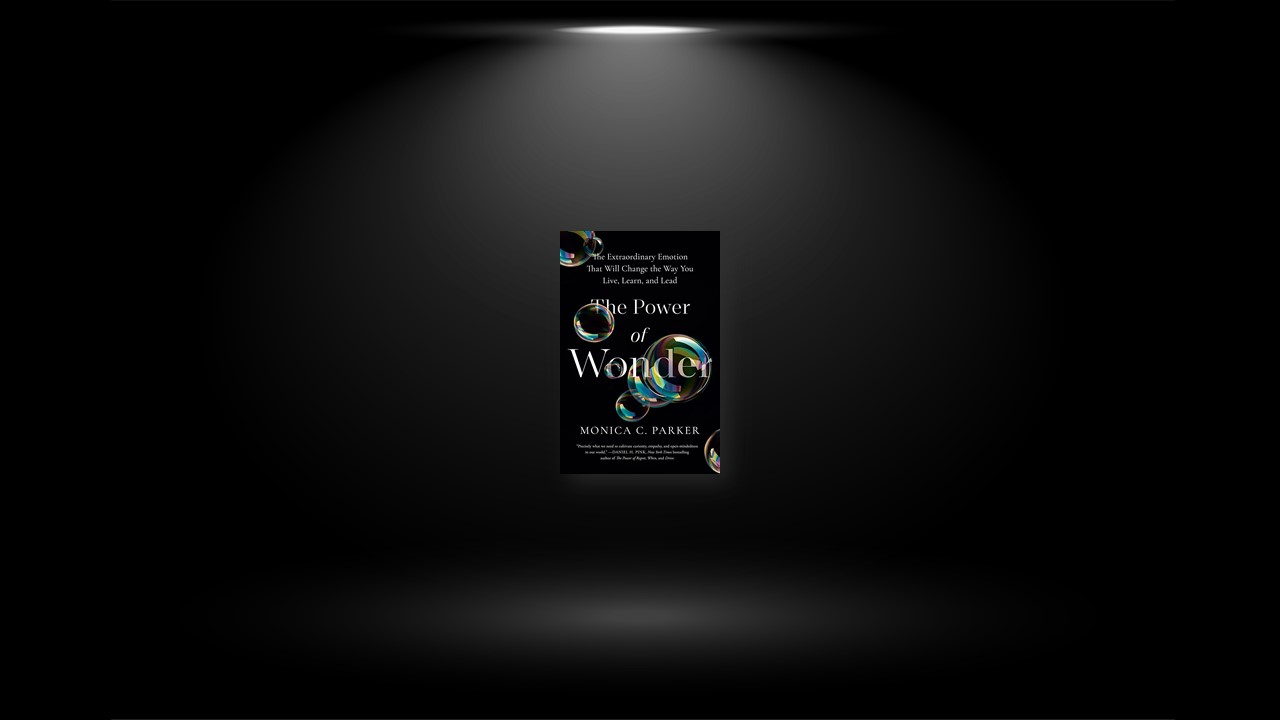Wonder purls its way through our lives from first cry to last gasp—moments that engage us, surprise us, take our breath away, and give us the gift of viewing the world, and our place in it, in an entirely different way. But something happens as we move from the wonder-filled days of childhood to obligation-laden days of adulthood. We become increasingly jaded. Like the sun that continues to shine on a cloudy day, wonder is still there, but we just can’t seem to see it anymore. And then one day we stop looking.
Modern life is conditioning wonderproneness out of us. From an education system that curbs curiosity in pursuit of standardized test scores to a business culture that worships at the altar of the cult of overwork, we have traded wonder for the pale facsimile of electronic novelty-seeking—chasing the manufactured instead of the meaningful.
Wonder has five elements: watch (openness), wander (deep curiosity), whittle (absorption), wow and whoa (awe).
Two dominant interpretations of happiness emerged from ancient Greek philosophy—hedonic and eudaemonic. Hedonic happiness focuses on maximizing pleasure, whereas eudaemonic happiness is a balanced, meaning-making path to happiness. Eudaemonic happiness is associated with wonder, while hedonic is contrary to it. A third path to summum bonum could be a “psychologically rich” life, whose characteristics are directly aligned with those of wonder.
When we push all negative thoughts from our minds, we fall into the trap of toxic positivity, and in doing so, we lose the opportunity to make sense of those experiences. Wonder allows for positive and negative emotional tone, and because of that, wonder is both more beneficial and more achievable than happiness.
1: Watch
Openness to experience—watch—the first element of wonder, is a stable, universal personality trait associated with intellectual curiosity, creativity, artistic expression, and cognitive flexibility, among other characteristics.
Our personality is the lens through which we see the world, and it can influence all manner of decisions we make and how wonderprone we are. About half of our personality is hereditary (nature) and about half is based on our environment up to adulthood (nurture).
While most personality traits are stable and set by adulthood, we can still build attitudes, beliefs, and strategies to enhance or mitigate our personality traits and make us more wonderprone. There are different types of daydreaming, and one of them, positive constructive daydreaming (PCD), is very beneficial for us. PCD is reflective and imaginative but not negatively ruminative. It links the internal exploration of openness with the external exploration of curiosity.
The default mode network (DMN), the part of the brain associated with daydreaming, is a relevant area of the brain when understanding wonder, as it is responsible for our reflecting on our own consciousness and experience of being human. The DMN is made up of subregions associated with memory, Theory of Mind, and mirror neurons, all elements associated with how we perceive wonder. It also appears to play a role in several areas of neuroscientific study such as autism, ADHD, meditation, flow, awe, psychedelics, and Alzheimer’s, to name a few.
2: Wander
Curiosity—wander—the second element of wonder, is both a trait and a state, meaning we have our natural disposition toward curiosity and situational curiosity prompted in the moment.
Exploratory behavior developed in humans to gather specific information needed for survival, but it has further evolved into a mechanism for meaning-making. Curiosity is associated with many benefits, including better relationships and increased well-being, but despite these, it has not always been viewed as a positive attribute.
Curiosity is driven by a dopamine response in our brain that motivates exploration. It also triggers our hippocampus, which enhances our incidental memory. Curiosity is a generally pleasant experience, but the lure of dopamine means we may engage in exploratory behavior even when it is unpleasant or not good for us (e.g., unhealthy internet usage).
There are several different models of curiosity, but they share notable similarities that can be generally lumped into two categories: surface and deep. Surface curiosity is motivated to close a specific knowledge gap, whereas deep curiosity encompasses the enjoyment of learning for learning’s sake. Both serve a purpose, but deep curiosity more directly contributes to wonder.
3: Whittle
Absorption—whittle—is the third element of wonder, posited to be both a state and a trait. It is described as becoming so engaged in a task that we commit our total attentional resources to it.
People higher in absorption tend to be more open, curious, empathetic, imaginative, and flexible, and they naturally gravitate toward artistic activities that are known wonderbringers.
Flow, a concept developed by Mihály Csíkszentmihályi, is a type of absorption characterized by deep, effortless attention. This feeling of “being in the groove” is achieved when we strike the right balance between our skills and the difficulty of an activity (i.e., hard but not too hard). Flow is difficult to categorize but is likely both a deep form of absorption and a light form of self-transcendent experience, and it is associated with many benefits, including improved well-being.
A self-transcendent experience (STE), also known as a mystical, numinous, sublime, or peak experience, is a moment of expanded awareness that takes us out of ourselves and makes us feel more connected to others. STEs are universal, with at least a third of people, but likely substantially more, having experienced one.
4: Compression and Release
A moment known as an expectation violation sits between the wonder elements of absorption and awe. When what we expect to experience and what we actually experience are vastly different, it acts as a catalyst for transitioning from absorption to awe. This phenomenon occurs because the brain notices and responds to contrasts.
To be as efficient as possible, our brain filters and pattern matches stimuli to determine what is salient, relevant, and worth noticing. These filters and patterns form the building blocks of our knowledge structures known as schema or heuristics. When we experience something worth remembering, our schema will change to take on that new information.
Latent inhibition, also known as learned irrelevance, is a phenomenon whereby we are less likely to notice new details of something familiar than something novel. If our latent inhibition is too high, we may miss opportunities for wonder.
Slow thought activities that focus on practicing presence, like meditation, help us self-regulate our inhibitory control, as do other cognitive training exercises like martial arts or singing in a choir.
5: Wow and Whoa
Awe is the last element of wonder and in many ways represents its ultimate manifestation as the pinnacle of the wonder cycle. Awe is a universal state and trait whose evolutionary heritage was likely associated with determining hierarchy, gathering information for survival, and building community.
Awe is typified by two states—vastness and accommodation, or wow and whoa. Vastness is when something, be it an incredible vista, complex idea, or moving oratory, strikes us in a way that makes us feel small and connected to the broader ecosystem of humanity. As our mind wraps itself around this new, moving experience and accommodates it, our schema changes, as does our view of the world.
Because of this small-self, awe makes us more prosocial, meaning we want to be better to each other through emotions like compassion, empathy, and generosity.
An example of the power of awe is a phenomenon called the Overview Effect, a profound psychological shift that occurs after astronauts see Earth from space. But while this is an example of an intense form of the emotion, awe can also be found in simple ways, like at a museum or on a walk in nature.
People who are open, deeply curious, and prone to absorption are more likely to experience awe, and awe, in turn, enhances these wonder elements. A wonder virtuous circle.


